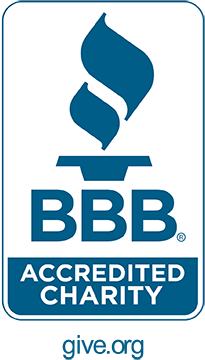Sector Summary
Sector Summary

The Facts
- Around 15% of the world’s population lives with a disability—80% in developing countries— making this population group the world’s largest minority. (UN ENABLE, UNDP)
- 90% of children with disabilities in developing countries do not attend school; only 3% of adults with disabilities around the world are literate. (UNESCO, UNDP)
- Unemployment among those with disabilities is as high
as 80% in some countries. (ILO) - Children with disabilities are 3 to 4 times more likely to be victims of violence. (UNICEF)
- In low-income countries, only 5-15% of those needing assistive technology can obtain it. (WHO, UNICEF)

The problem
In 2008 the UN adopted the Convention on the Rights of Persons with Disabilities (CRPD) to promote, protect, and ensure the full and equal enjoyment of all human rights and fundamental freedoms by persons with disabilities (PWD). The CRPD requires signatories to ensure that international development efforts address the needs of people with disabilities, but they face many barriers to enjoying their rights. Prejudiced, judgmental, and biased views of people with disabilities, lack of physical accessibility in public spaces, and outdated laws and policies form the environmental, institutional, and attitudinal barriers that promote exclusion rather than inclusion. To overcome this, programs must go beyond offering direct services that are focused on an individual’s impairment to address the broader social context in which people with disabilities live.
World Vision’s response
World Vision adopts a rights-based and social model approach to disability access, inclusion, and stigma reduction, in line with recommendations in the CRPD. Working with local disabled people’s organizations (DPOs), staff develop programs that are inclusive of people with disabilities in their activities, monitoring and evaluation, and research. World Vision promotes attitudinal and behavioral change through training, advocacy, and stakeholder engagement and ensures that universal access is stipulated for all reconstruction and infrastructure work.
Programs focus on integrating PWD into aspects of community life including education, economic opportunities, and family life. This includes training teachers in inclusive teaching methods to appropriately incorporate students with disabilities, as well as training parents in proper care for children with disabilities. Schools are encouraged to construct accessible classrooms, latrines and water points. To reduce stigma, World Vision promotes the rights of individuals living with disabilities and empowers community members to become advocates for disability rights.
Featured projects
Colombia
The USAID-funded TEAM project built on World Vision’s 35-year presence in vulnerable communities by enabling more than 1,900 people with disabilities to attain maximum independence and fully participate in all aspects of life. TEAM provided medical and rehabilitation services, expanded provision of assistive technologies, piloted the use of telemedicine, increased access to economic opportunities for PWDs and their caregivers, and trained rehabilitation service personnel. DPOs provided support services through trained community workers. The project has enabled communities to use Citizen Voice and Action to hold the government accountable when products and service provision are inadequate.
India, Nicaragua, Romanai, El Salvador, Kenya
World Vision implemented the USAID-funded Accelerating Core Competencies for Effective Wheelchair Service and Support (ACCESS) project, designed to strengthen the wheelchair sector and ensure that all people with mobility limitations are able to enjoy full participation in their communities. World Vision partnered with 10 technical organizations across the five countries to build the capacity of local service providers for proper wheelchair provision through training, equipment, supplies, and ongoing mentorship. World Vision conducted community-based identification and social inclusion, followed up with clients who received wheelchairs, and worked with DPOs and communities to conduct social accountability through Citizen Voice and Action. As a result 7,319 clients received wheelchair service and 93 percent of respondents indicated an increase in social inclusion at the end of the program. The 8 Steps + program model, developed under the ACCESS project, is currently being scaled up across World Vision to ensure appropriate wheelchair service and disability inclusion.
Guatemala
The Puentes project, funded by USAID, supports youth to pursue employment, education or to start their own business. Within this project, we support nearly 800 youth with disabilities. We have partnered with the National Council for Attention to Persons with Disabilities (CONADI). They have trained and guided our staff to engage persons with disabilities effectively, to treat them with dignity and respect, to shape program design and outreach and to link to their networks. Youth with disabilities can access an inclusion fund that provides assistive devices and funding for transport and other support costs.
Global
Launched in 2011 by USAID, World Vision, and the Australian Government, All Children Reading: A Grand Challenge for Development (ACR) is an ongoing series of competitions that leverage science and technology to source, test and disseminate scalable solutions to improve literacy skills of early grade learners, including those with disabilities, in developing countries. ACR has expanded the amount of content and the accessibility of the content for children with disabilities including Adapt book-creation software to create materials that are screen-reader accessible awards to:
- Adapt book-creation software to create materials that are screen- reader accessible
- Adapt the Early Grade Reading Assessment (EGRA) for Braille and sign language
- Provide guidance on the development of sign language materials
- Test the Child-functioning module teacher version to identify children with disabilities in school

Collaborations
World Vision works with other NGOs, U.N. bodies, local partners, government ministries, and faith leaders to ensure the safety and well- being of children, including:
- AGlobal Partnership to End Violence Against Children
- IASC Alliance for Child Protection in Humanitarian Action
- Child Labor Coalition
Contact us
Get in touch with our experts to discuss how we can create impact together.
Learn more at worldvision.org/disability
Contact us
Get in touch with our experts to discuss how we can create impact together.




